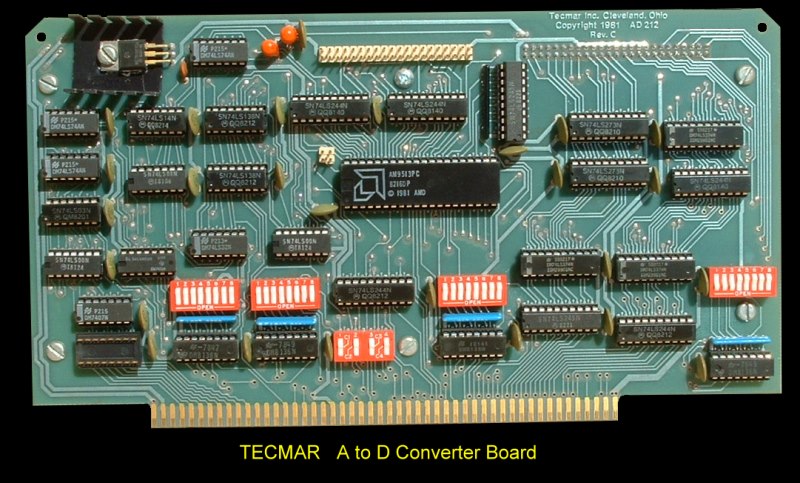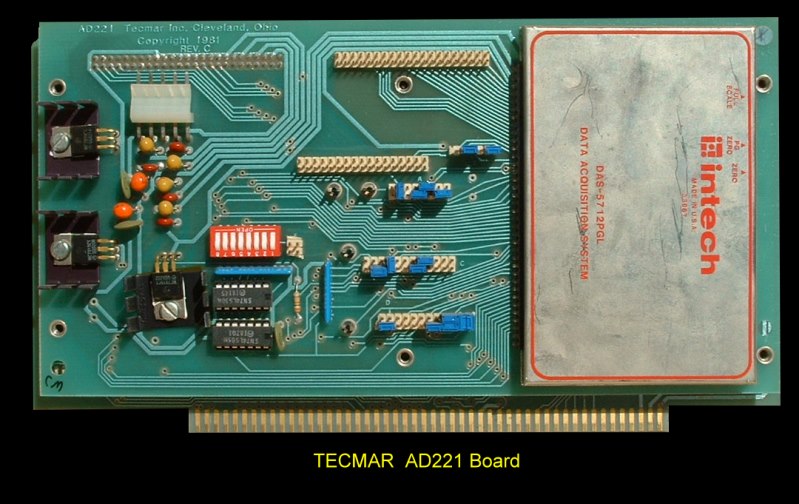

| Home | S-100 Boards | History | New Boards | Software | Boards For Sale |
| Forum | Other Web Sites | News | Index |


1. Set time of day
2. Set 24 hour time of day
3.
Read time of day
4. Read 24 hour alarm status
5.
Collect a given number of data points using
the AD212 at a timer interval
varying from 40 microseconds to 64K seconds
6. Optional continuous visual monitoring of the data being collected
7. With the TM-DA100 an array of data in memory was converted to an analog signal that can be used to drive a plotter, oscilloscope, etc.
8. An event counter was provided which can count from 0 to 64K
9. A routine was provided which displays the contents of an integer array on a video monitor .
The main component of the data acquisition sub-system is the large module on the daughter board which contains the 16 channel multiplexer, sample-and-hold, analog to digital converter and related control circuitry. The AD212 is currently designed to accept at least nine different modules from two manufacturers. These are the DT5701, DT5702, DT5703, DT5710, DT5712, DT5714, and DT5716 from Data Translation, Inc. and the MP6812 and MP6912A from Analoqic Corp. These modules are not entirely plug compatible with one another so that a number of jumpers are required on the daughter board to compensate for the incompatibilities. There are also a number of optional modes of operation the selection of which requires additional jumper areas. The specific function of these jumpers are described when the related part of the circuit in the manual.
This page was last modified on 10/25/2013